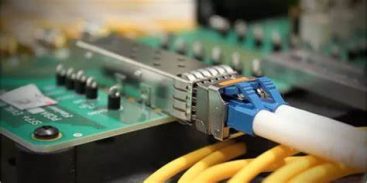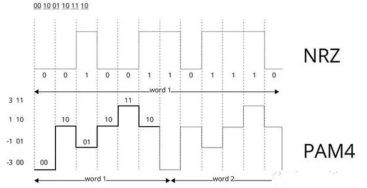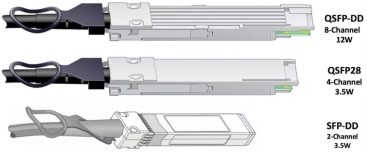200G Pusat Data: Cara Memilih Modul Optik QSFP56 dan QSFP-DD?
Dengan pesatnya perkembangan komunikasi optik dan teknologi internet, permintaan lalu lintas data jaringan tumbuh secara eksponensial, and the average annual growth rate of telecom backbone network traffic is as high as 50% ke 80%. In order to cope with the increasing demand for data transmission, optical communication rates have continued to evolve from 10G, 25G, and 40G to the current mainstream 100G, 200G, 400G, and even higher

In this context, the selection of QSFP56 and QSFP-DD as key interface standards to achieve 200G speeds is particularly important when building 200G data centers. The QSFP56 module is an improved version of the original QSFP+ design designed to increase data transfer rates through optimization, while the QSFP-DD introduces a dual-density design that effectively increases port density and maintains backward compatibility with the QSFP family of products. Both have their own advantages and characteristics in terms of performance, cost control, energy efficiency, and thermal management, and in practical applications, it is necessary to conduct a comprehensive evaluation and reasonable selection according to the specific business needs, expansion plans, and future development trends of the data center.
Package type of 200G data center optical module
Saat sekarang, the mainstream 200G optical modules on the market mainly use two package forms, namely 200G QSFP56 and 200G QSFP-DD. Diantara mereka, the QSFP56 was officially released in 2017, which is a major technical upgrade based on the early QSFP series optical module design, while the QSFP-DD is in the research and development stage and has gradually emerged. Both types of transceivers are designed to meet the demanding requirements of high-performance computing and data center scenarios, and both have good backward compatibility with earlier QSFP versions, including QSFP28.
Optimized for 200G Ethernet applications, the QSFP56 optical module has four independent transceiver channels, each supporting a data rate of up to 53.125 Gbps, resulting in a total transmission capacity of 212.5 Gbps. The module is suitable for the 850nm, 1310nm, CWDM or LWDM wavelength ranges, and uses the MPO interface for optical signal transmission and the electrical interface connection via a 38-pin electrical connector. Compared with the previous generation of QSFP products, the QSFP56 adopts advanced PAM4 digital modulation technology, which significantly improves the data transmission efficiency.
On the other hand, QSFP-DD (Quad Small Form Factor Pluggable Double Density) optical transceivers comply with the IEEE802.3bs standard and the QSFP-DD MSA specification. The core innovation is the dual-density structure design, which increases the number of electrical interface channels. Secara khusus, the 200G QSFP-DD has eight electrical interface lanes with a total bit rate of up to 212.5Gb/s. In terms of optical interface, MPO or multi-mode duplex LC interface can be selected. It is worth mentioning that QSFP-DD is not only compatible with most QSFP specification versions, such as QSFP56, but also contains eight channels of up to 25 Gbps in its electrical interface, using NRZ modulation to ensure efficient and stable signal transmission.
Comparison of 200G QSFP56 and 200G QSFP-DD
In the field of 200G data centers, the optical modules in the form of QSFP56 and QSFP-DD show significant differences in the use of different digital modulation technologies. NRZ (Non-Return-to-Zero) is a basic and widely used modulation method that transmits data through two voltage levels corresponding to logic 0 Dan 1 (yaitu, PAM2). Namun, as bandwidth demands grew, PAM4 (Four-Level Pulse Amplitude Modulation) was developed, which enables PAM4 signals to transmit data at twice the rate of traditional NRZ signals using four different voltage levels in the same time unit: 11, 10, 01, Dan 00.

The main advantage of PAM4 over NRZ is its ability to achieve higher data rates. Namun, while 200G NRZ may be slightly inferior to PAM4 in absolute speed, it also has some advantages that cannot be ignored: lower power consumption, small signal latency, and relatively easy deployment process. Especially in the intra-data center interconnection scenario, the solution using 200G NRZ modulation can provide a cost-effective interconnection solution for the data center due to its optimized energy efficiency and cost-effectiveness, especially in the application environment with high requirements for energy consumption control, real-time performance, and limited budget.
Advantages and limitations of 200G QSFP56 vs. QSFP-DD
The QSFP56 is designed to meet the needs of 200G applications, but its technical architecture does not support direct upgrade to 400G and above network environments.
In contrast, QSFP-DD is compatible with both 200G and 400G rate versions, and allows users to gradually upgrade as needed, with greater scalability and flexibility.
In terms of modulation, QSFP56 uses PAM4 technology, while QSFP-DD usually uses NRZ modulation when achieving 200G rates.
In terms of channel configuration, QSFP56 only needs 4 channels to complete 200G data transmission, which is more advantageous in terms of fiber cost and link loss than QSFP-DD, which requires 8 saluran.
Namun, QSFP-DD offers a number of advantages: lower maintenance costs, kinerja tinggi (as low as E-8 pre-FEC and E-12 later), konsumsi daya rendah, latensi rendah, and ease of deployment and management. Selain itu, it can flexibly adapt to traditional specifications of different speeds through splitting, which enhances network upgradeability and compatibility, and is backward compatible with earlier QSFP series optical modules, including QSFP56, but not QSFP-DD.
In terms of price, the price of QSFP-DD is about 15% ke 30% higher than that of QSFP56. Although the initial investment is high, it is partially offset by the lower energy consumption and latency performance of the QSFP-DD considering the long-term operation and maintenance costs. It is also worth noting that if the current network equipment does not generally support QSFP-DD, it may be more cost-effective to choose QSFP56, as it may face high cost pressure when increasing the connection rate. Namun, if you have a sufficient budget and are looking at future network expansion and performance optimization, QSFP-DD is a better choice for subsequent upgrades.

As for 200G AOC and DAC products, they are usually used for direct connections between access switches and servers. Especially at the basic interconnect level, we provide branched DAC and AOC solutions that can meet various complex requirements beyond traditional direct-attach DACs and AOCs. This series of products covers different rate combinations from 200G split to 4x50G, 200G split to 8x25G, and even 200G split to 2x100G, providing a more flexible and adaptable interconnection solution for data centers.


